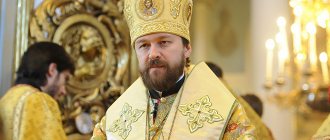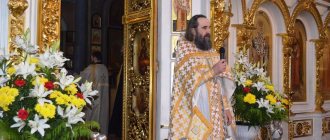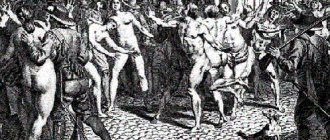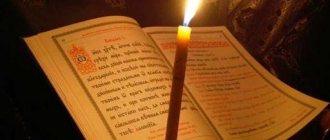History of the temple
Penza was founded in the middle of the 17th century. The Assumption Cathedral was built much later. Before it was built, on this site - the Mironositsky cemetery - there was a small church consecrated in honor of St. Women of the Myrrh-Bearers. Unfortunately, it was completely destroyed by fire, which often happened to wooden buildings in that period. After this, the question arose about the need to build a new temple in an empty clearing.
Assumption Cathedral in Penza
The authorship of the project for the future cathedral belonged to engineer Starzhinsky. Funds for construction were donated by parishioners. In 1905, the new majestic cathedral opened its doors to the Orthodox. The whole city was looking forward to this event. Three altars were built and consecrated in the cathedral:
- Dormition of the Blessed Virgin Mary;
- St. Myrrh-Bearing Women;
- Metropolitan Alexy Moskovsky.
After the revolution in 1922, the Soviet government handed over the building to the renovationists to carry out their services. In 1931-1937 within the walls of the cathedral the cathedral of the bishop of the Renovationists was located. It is assumed that during the same period the miraculous Penza-Kazan icon of the Blessed Virgin Mary was kept there.
In 1937, the renovationists were arrested and the temple was locked. Some time later, a warehouse was organized there where army skis were stored. After the end of the Second World War, the temple was opened and services began to be held there. Having spiritual support, the whole city began to revive. The bishop's pulpit was placed within the walls of the temple. At the end of the 70s, a lower chapel was created, which was consecrated in honor of St. Seraphim of Sarov.
Current state
Today, the Assumption Cathedral appears before us transformed thanks to many restorations and construction carried out on its territory.
Interior of the Assumption Cathedral
So, since 1996, in a separate room built next to the temple, a Sunday school, a conference hall, a library and even a hotel for pilgrims and tourists were opened. Since 2000, the cathedral has housed the main shrine - the holy relics of Innocent of Penza, especially revered in the city. In addition, next to the Assumption Cathedral, the Annunciation Church is now open, and in 2015, a memorial museum dedicated to Archbishop Seraphim of Kuznetsk and Penza was opened at the cathedral.
Today, the priests of the temple and their assistants lead an active social and cultural life, organizing and conducting various kinds of competitions, projects and other events.
On a note! For the large flock in the temple there is a youth club and a Sunday school for children, and a social ministry for the elderly.
Description of the architecture
The cathedral is a cross-domed structure with a rectangular plan. It has five domes, and its placement on a hill gives the impression of ascending upward. If from afar it may seem to be flying, then from a close distance its monumentality and the significant thickness of the temple walls are fully revealed.
On three sides of the temple there are porches marking the entrances to the building. The main drum is located in the center, and there are gilded crosses on all domes. The cathedral is an excellent example of ancient Russian building traditions. The author of the project did not pile up the composition with unnecessary details and decorations.
The cathedral does not have a separate bell tower. It was replaced by a small belfry placed on top at the level of the domes above the western entrance. Above the central doors there are two icons: the Resurrection of Christ and St. Myrrh-Bearing Woman.
On the eastern side there are three semicircular apses. They represent the number of altars, and looking at them, it becomes clear in whose honor the altars of the cathedral are consecrated.
Archive photo of the cathedral
New section: What secrets does the Assumption Cathedral keep?
Alexey Molebnov
To get here, you need to go through the Myronositsky cemetery. After the graveyard, the amazing architecture of the church façade opens up.
“A temple is an amazing place where a person meets God,” said the holy fathers who lived in Rus'. Their words do not lose their meaning in our time. Thousands of Penza residents flock daily to churches, cathedrals, and monasteries in the hope of receiving help and the intercession of the Lord.
With the blessing of Metropolitan Seraphim of Penza and Nizhnelomovsk, on the eve of the celebration of the Feast of the Resurrection of Christ, the information and analytical portal Penza-Online is launching the project “History of Penza Temples”, within the framework of which we will try to tell you about the most famous churches of our province.
The Assumption Cathedral is located on the top of the hill. To get here, you need to go through the Myronositsky cemetery. After the graveyard, the amazing architecture of the cathedral façade opens up.
Typically, burial sites in Penza were chosen directly near parish churches and on the territory of monasteries. However, in 1771, in connection with the plague epidemic in Moscow, the Senate issued a decree ordering the creation of cemeteries outside the city limits.
In our city, the western outskirts were chosen as such a place. In 1783, believers built a small church here in the name of St. Demetrius of Rostov, where funeral services were held.
In 1828 it was turned into a parish, expanded and a second floor was added.
Its main altar was dedicated to the Bogolyubsk Icon of the Mother of God. Not far from this temple, on a city pasture, a new cemetery was founded. There was a need for a church.
Patrons of the arts, officials, and ordinary townspeople actively donated to the construction of the house of God in honor of the Holy Myrrh-Bearing Women Equal to the Apostles. Its consecration took place in 1836.
Advice
Since then, the cemetery has been called Mironositsky after the parish located here. Every year the walls of the church became more and more crowded.
By the end of the nineteenth century, the question arose about opening the Assumption Church here, the architect of which was Alexander Starzhinsky (1850-1906), in 1883-1905.
served as provincial engineer and head of the construction department. Almost the same temple as the Assumption was built by Alexander Starzhinsky in the village of Bolshaya Luka, Kerensky district.
The church was opened in 1905, and we pray within its walls today.
In the center there are three altars: the central one - in honor of the Dormition of the Mother of God, the right one - in honor of the Holy Myrrh-Bearing Women Equal to the Apostles, and the left one - in honor of St. Alexis, Metropolitan of Moscow.
They named it in honor of the Dormition because the Mother of God has always been the patroness of Penza, the side one - in honor of the myrrh-bearing women in memory of the temple that was here, and the third one - in honor of the birth of Tsarevich Alexy.
By the way, the main altar was consecrated by Bishop Tikhon (Nikonorov), now canonized.
In 1922, the Assumption Church was transferred by the Soviet authorities to the renovationist community. Already in 1937, the temple was given over to a military ski warehouse. But meanwhile, all the paintings and iconostases have been preserved.
No services were held here for eight years. It was opened on April 6, 1945. At that time, there were two parishes in the region: the Mitrofanievskaya Church in Penza and the Kazanskaya Church in Kuznetsk. The bishop's department was located in Mitrofanyevskaya, but in terms of capacity our church was more suitable for it. At the request of Bishop Michael, it was transformed into a cathedral.
note
At the end of the 70s. here a lower chapel was built in the name of Seraphim of Sarov, mainly for performing funeral services.
Modern activities
After reconstruction in 1996, an additional administrative building was built near the temple. It houses a dormitory, the rector’s workroom, a Sunday school, etc.
The relics of St. are kept within the walls of the temple. Innocent of Penza.
Sunday School
Large-scale educational activities are carried out on the basis of the cathedral. Currently, several institutions are operating at once. For more than 20 years, classes have been held at the Sunday school, which was consecrated in honor of St. Innocent of Penza. School students are divided into classes by age:
- 3–6 years. Classes are held in the presence of parents. Most of the time is devoted to creativity. Children are given about 1.5 hours per lesson.
- 7–9 years old. The lesson lasts up to three hours. Students take part in various productions and organize joint events. They are assigned simple tasks.
- 9–12 years old. From this age, children are introduced to the Law of God, classes are held in the Church Slavonic language and singing. Some of the students get the opportunity to take part in the service in the choir. Children's liturgies in the cathedral are held only for students of this school.
- 13-15 years old. In addition to standard school lessons, children study the history of the church, which covers the entire period from the first Christians to the new martyrs of the 20th century. Students assist in charity events. Boys may, if they wish, assist the priests during services.
Morality is brought up in children. The classes allow them to broaden their horizons and join the Church.
Interior decoration and iconostasis
Youth Society
The youth society created on the basis of the cathedral operates in several directions:
- Social work. Participants provide assistance to lonely, sick, and elderly people, visit orphanages, and organize charity events.
- Missionary work. This includes visiting schools and holding conversations with children, distributing literature.
- Cooperation. Participants help the cathedral and visit monasteries and other churches for this purpose.
Cultural, historical, spiritual heritage
When the cathedral was built on the cemetery grounds, this place was the outskirts of the city. But Penza has grown, and now the cemetery and temple are in its center. The graveyard was intended for ordinary people, but the remains of many major merchants of the city are buried here. Ancient tombstones made in the old traditions, urns, and tomb chapels stand out.
The list of cultural heritage sites of the Russian Federation includes the cathedral itself and eight other buildings located in the cemetery. There are also mass graves of soldiers who could not be saved in city hospitals during the Second World War. The care of the graves is carried out by the parish of the temple, volunteers and public organizations.
The relics of St. Innocent are the main shrine of the monastery
Services and patronal holidays
Several altars are consecrated in the cathedral. Therefore, patronal feasts are celebrated here several times a year:
- Assumption of the Blessed Virgin Mary - August 28;
- Holy Myrrh-Bearing Women - second Sunday after Easter;
- St. Alexy Moskovsky - February 25, June 2;
- St. Seraphim of Sarov - January 15, August 1;
- Annunciation of the Blessed Virgin Mary - April 7.
Each patronal feast is a special event in the life of the church. It is accompanied by a solemn service. On this day, not only parishioners, but also many guests and pilgrims from other cities rush to visit the temple.
Home › Temples and monasteries
Assumption Cathedral. Annunciation Church-Baptismal Church
In 1836, the stone Myronositsa Church was built in one of the city cemeteries, consecrated on October 18 of the same year. The priest of the Spiritual Church, Simeon Alekseevich Karmilov, took care of the construction of the temple. In 1891, the chapel of Sergius of Radonezh was consecrated at the temple. Since 1875, a wooden chapel was assigned to the Myronositsa Church above the holy spring, next to the cemetery (by the beginning of the 20th century, the chapel no longer existed).
In 1895, it was decided to build a new church, the Assumption Church, at the Mironositsky cemetery. On April 17, 1895, the construction department of the provincial government approved its project, which was developed by the architect Alexander Gavrilovich Starzhinsky (1850-1906), in 1883-1905. served as provincial engineer and head of the construction department. He created a wonderful monument of the Russian national style. Almost the same temple as the Assumption was built by him in the village of Bolshaya Luka, Kerensky district.
In 1895, construction of a new church began south of the Myronositsa Church. The rector, Archpriest Grigory Nikolaevich Feliksov, and the patrons, Maximilian Evlampievich Ivanovsky, Stepan Lavrentievich Tyurin and Alexey Dmitrievich Guttorov, showed great diligence during the construction. Soon, in 1899, the old church burned down. In the same year, the Church of St. Sergius of Radonezh (destroyed in the 30s) was consecrated in the tomb (apparently built under the bell tower).
In 1905, the Assumption Church was completed and consecrated by Bishop Tikhon. On May 1, the main altar was consecrated in the name of the Dormition of the Mother of God, on May 15 - the left one in the name of Alexy of Moscow, on June 19 - the right one in the name of the Myrrh-Bearing Women.
After the revolution (probably in 1922), the Assumption Cathedral passed to the Renovationists. In 1931-1937 here was the renovationist bishop's see and, most likely, the Penza-Kazan miraculous icon of the Mother of God. In 1931-1933, before his first arrest, priest Alexander Petin, a monk Nikon (1902-1956), served here. In 1944 he became Bishop of Voroshilovgrad and Donetsk, in 1948 - of Odessa and Kherson, in 1951 - Archbishop. In Odessa he is still revered as an outstanding archpastor.
In 1937, after the arrest of all the church servants led by Archbishop Sergius (Serdobov), the Assumption Cathedral was closed. In subsequent years, it housed a military ski warehouse.
On April 6, 1945, the cathedral reopened to believers, and soon the bishop's department was moved there from the Mitrofan Church. At the end of the 70s. In the cathedral, a lower chapel was built in the name of Seraphim of Sarov - mainly for performing funeral services.
In 1970-1975 the rector of the cathedral was Archimandrite Yuvenaly (Tarasov), now retired schema-metropolitan of Kursk and Rylsk; in 1988-1991 – Archimandrite Barsanuphius (Sudakov), now Metropolitan of St. Petersburg and Ladoga. Keymaster and priest of the cathedral in 1997-2001. Served as Hieromonk Seraphim (Domnin), now Metropolitan of Penza and Nizhnelomovsk.
Since 1991, the rector of the church has been mitered Archpriest Sergius Loskutov, secretary of the diocesan administration. On October 2, 1999, the liturgy in the cathedral was celebrated by His Holiness Patriarch Alexy II. In 1988 and 1990 the services were twice led by His Eminence John (Snychev), the future Metropolitan of St. Petersburg and Ladoga; January 17, 2010 – His Eminence Hilarion (Alfeev), Archbishop (now Metropolitan) of Volokolamsk, Chairman of the Department for External Church Relations of the Moscow Patriarchate.
On October 22, 2000, the relics of St. Innocent of Penza (1784-1819) - one of the main shrines of the diocese - were transferred to the Assumption Cathedral.
Behind the altar of the cathedral are the graves of Archbishops Theodosius (reburied here in August 1996) and Seraphim (who died on July 3, 2000). Artists K. A. Makarov (1862) and V. V. Galaktionov (1897), architect A. G. Starzhinsky (1906), director L. S. Samborskaya (1955), musician N. A. Vitver were buried at the Mironositsky cemetery (1959) and many other famous Penza residents.
In 1990-1994. next to the cathedral - almost on the site of the former Myronositsa Church - the Annunciation Church-baptism was built. The project was developed by the Penza architect Dmitry Aleksandrovich Borunov, the paintings were carried out by the Syzran artist Sergei Saksonov. The consecration of the temple took place on December 10, 1994. In the early 2000s. The baptismal church was completely painted.
On February 22, 2015, a memorial museum of Archbishop Seraphim of Penza and Kuznetsk (Tikhonov, 1935-2000) was opened at the cathedral.
Address: st. Zakharova, 6 Phone Website: uspsobor.ru
Rector: Archpriest Sergiy Loskutov Keynote: Priest Sergiy Chervyakov
Patronal feasts: August 28 - Assumption of the Blessed Virgin Mary 2nd Sunday after Easter - Sts. Myrrh-Bearing Woman February 25, June 2 – St. Alexy of Moscow January 15, August 1 – St. Seraphim of Sarov April 7 – Annunciation of the Blessed Virgin Mary
Shrines: Relics of St. Innocent of Penza; reliquary with a particle of the relics of St. Pimen Ugreshsky; Spanish icons John Olenevsky and Blessed. Matrona of Moscow with particles of relics; ancient revered icons of the Mother of God - Kazan, Iveron, Mammal; icons of the Savior, St. Nicholas the Wonderworker, St. Sergius of Radonezh, martyr. Panteleimon.
Schedule of services: On weekdays, liturgies are celebrated at 8.00, evening services - at 17.00 in the summer, and at 16.00 in the winter (from the Intercession to the Annunciation). On Sundays and holidays, liturgies are celebrated at 7.00 and 9.30. On Saturdays and on the eve of holidays, all-night vigils are always held at 17.00. The temple is open daily from 7.00 (on Sundays and holidays from 6.00) until the end of the evening service. In the Annunciation Church, only the sacrament of baptism is regularly performed.
Educational activities: Since 1995, the cathedral has offered four-year theological courses for people with higher secular education. Classes are held on Sunday, Monday, Tuesday and Wednesday evenings. Since the beginning of the 90s. There is a Sunday school for children 7-13 years old. Classes are held on Sundays at 12.00. In 2012, four-month catechetical courses began for those wishing to learn more about Orthodoxy. There is an Orthodox library at the cathedral. On Fridays at 18.00 and on Saturdays at 14.00, conversations are held for those wishing to receive the sacraments of baptism or wedding. Since November 2010, there has been a youth group “Sretenie” at the cathedral. Its participants meet on Sundays at 18.00. In their care are several elderly parishioners.
Social service: Since 1999, the cathedral has had a sisterhood named after. M. M. Kiseleva. It takes care of the Kuznetsk orphanage. When children are sent for treatment to inpatient medical institutions in Penza, nurses provide all the necessary care for them. Since 2004, a charity canteen has been operating at the cathedral, which provides hot meals to up to 50 people in need on Saturdays and Sundays from 11.00 to 13.00. Since February 2010, the cathedral has had a social worker. On Easter and Christmas for the pupils of the social orphanage on the street. Litvinov and correctional classes at school No. 30 on the street. Patsayev hosts holidays; on the Assumption and the day of remembrance of St. Innocent at the cathedral they organize a field kitchen for parishioners; pilgrimage trips are organized for the poor; a social worker makes home visits to former diocese employees and cathedral clergy. The Union of Orthodox Women, created in 2010, is also located at the cathedral. Its members meet in the library on Sundays at 12.00.
— Shortened link: https://eparkhiya.ru/?p=2917
Schedule of services
The doors of the cathedral for Orthodox Christians open daily at 7:00. The temple closes after the evening service. Typically services are performed according to the following schedule:
- evening services – 17:00; in the period from October 14 to April 7, the start is moved to 16:00;
- Liturgy on weekdays – 8:00;
- Liturgy on holidays and Sundays – 07:00 and 09:30.
Additional information can be found by calling (8412) 68–68–39 or on the official website of the cathedral: https://uspsobor.ru/.
Author's advice
Worship in the temple
Sunday School
Youth Community
Assumption Cathedral (Penza) in the city of Penza
Assumption Cathedral
- a cross-domed church located in the city of Penza, Penza region of Russia. Built in 1905 in the Russian style according to the design of the provincial engineer A. G. Starzhinsky.
Since 1836, at the Myronositsky cemetery there was a church in the name of the Holy Myrrh-Bearing Women. On November 21, 1899, it burned down and then, through the efforts of the rector of the church, Archpriest Grigory Nikolaevich Feliksov, church elders: merchants M. E. Ivanovsky, S. L. Tyurin and tradesman A. D.
Gutorov, with donations from Penza residents, the Assumption Cathedral was built in 1905. The project for the new temple was developed back in 1895 by provincial engineer Alexander Gavrilovich Starzhinsky, the author of the designs for many temples and chapels.
Address and how to get there
This beautiful cathedral is located in the central part of the city on the territory of the Mironositsky cemetery. Address: st. Zakharova, st. 6. You can get there using public transport:
- buses No. 165, 130, 30, 102;
- minibuses No. 5K, 21, 93, 86.
Beautiful in terms of architecture, history and spiritual heritage, the temple daily receives a large number of regular parishioners, as well as city guests who come to admire the majestic building.
The Assumption Cathedral is far from the oldest temple in Russia. It was consecrated on the eve of difficult trials for the country and its people. But even in the dark post-revolutionary time, by the grace of God it was not destroyed and continued to operate.
If you find an error, please select a piece of text and press Ctrl+Enter.
Assumption Cathedral
How to get to the Assumption Cathedral
| Minibus taxi | No. 29 stop “Avtokombinat” |
Orthodox churches have always served as a spiritual support for residents, helping them to endure all the hardships of life with hope.
Despite persecution and bans, many of the churches worked during the years of wars and revolutions. The Assumption Cathedral of the city of Penza, once built on a remote outskirts, remained this way.
Today it is located in the historical part of the city next to the Mironositsky cemetery on Zakharova Street.
note
Previously, on the site of the Assumption Cathedral there was a small church, consecrated in 1836. It had a chapel in honor of Sergius of Radonezh. A small chapel built over a spring also belonged to the church. Unfortunately, at the beginning of the 20th century it was destroyed. In 1899, the church itself burned down.
The townspeople were waiting for a new temple and donated their funds for the construction. In 1901, the Holy Synod gave its blessing to the construction of a new temple. Its project was developed by A.G. Starzhinsky, who served as the chief engineer of the province. He built three churches in the Penza region.
In addition to the Assumption Church, Starzhinsky created projects for the Church of Innocent and the Cathedral of the Life-Giving Trinity in the Penza Monastery.
The new church was completed by 1905, and at the same time it was consecrated by Bishop Tikhon of Penza and Saransk. All three chapels in the cathedral were consecrated: in honor of Metropolitan Alexy, in the name of the Dormition of the Mother of God and the Myrrh-Bearing Women. The cathedral continued to work after the revolution.
But now it was transferred by the Soviet government to representatives of the schismatic movement in Orthodoxy, the so-called renovationists. It appeared in Russia in 1917 and existed until the middle of the 20th century. This movement considered its goal to be the modernization of church services and a more democratic way of governing the Russian Orthodox Church.
In the 30s, the episcopal department of the Renovationists settled in the Assumption Cathedral. According to some information, the miraculous image of the Penza-Kazan Mother of God was also kept in the temple.
From 1937 to 1945, the Assumption Cathedral was closed, and its premises housed a warehouse for one of the military units.
But after the war, the city government gives permission to hold services, the cathedral opens and the symbol of episcopal power is moved here - an honorary chair intended for the bishop.
Important
Therefore, the cathedral receives the title of cathedral. In the 70s, another chapel appeared in the temple in honor of Seraphim of Sarov.
In the late nineties, an administrative building was built on the territory of the temple, which today houses a conference room, Sunday school classes, a dormitory, and more. The Annunciation Church was erected for the christening.
Services were held in the Assumption Cathedral by His Holiness Patriarch Alexy II, the future Metropolitan of St. Petersburg and Ladoga John, and Archbishop Hilarion of Volokolamsk. The main shrine of the entire Penza diocese and the Assumption Cathedral are the relics of St. Innocent of Penza located here.
The architecture of the ancient cathedral, made in the old Russian style, is also amazing. It is a cross-domed unplastered building with five domes. Externally, the cathedral resembles a fairytale tower.
Source: https://www.tourister.ru/world/europe/russia/city/penza/temples/29388










